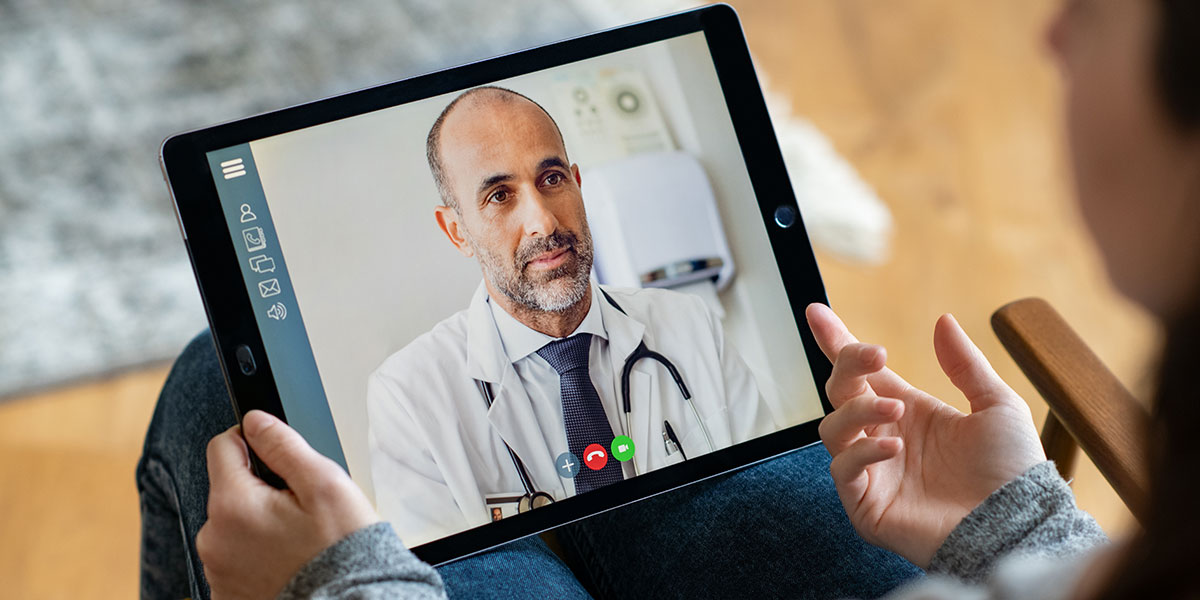The COVID-19 pandemic has transformed into a healthcare, economic, and humanitarian crisis like no other. With the healthcare sector on the front lines of this crisis, digital health has been crucial to address emerging challenges. It has created a defining moment for the industry, transforming digital health from a luxury into a necessity.
More partnerships and acquisitions between healthcare providers and digital health companies have emerged over the past few years. Despite the COVID-19 crisis, capital flow to the digital health tech ecosystem remains strong. As the pandemic continues to drive the shift toward virtual care, we explore the emerging digital health trends that will impact healthcare innovation and investment in the future.
Lower regulatory and reimbursement barriers
The lack of reimbursement by insurers and payer organizations has been one of the greatest obstacles to digital health adoption. In a study conducted by Ropes & Gray LLP in December 2019, involving more than 250 healthcare, life science, and digital health professionals, 60% of respondents said that the healthcare industry’s strongly entrenched business and reimbursement models make it difficult to bring digital health solutions to market.
This is starting to change as telehealth becomes the new normal amid the coronavirus outbreak. As healthcare providers encourage patients to stay home, states and hospitals have allowed for expanded telehealth access via digital health apps.
More insurers and health organizations across the globe are embracing telehealth solutions in the wake of COVID-19. In the US, the CMS has announced it will extend reimbursement to 135 additional services delivered via digital health platforms. In March 2020, the Department of Health and Human Services (HHS) announced temporary flexibilities to enable physicians to use common virtual communication tools like Skype to do telehealth visits.
Digital behavioral health
Behavioral health, which includes mental and psychiatric health treatments, has been gaining attention over the last few years. Increased awareness and dialogue about mental health issues has led to more individuals seeking professional help via digital behavioral health apps.
With the pandemic restricting social interaction and causing greater uncertainty, the need for mental health support has never been more urgent. Google searches for terms such as “anxiety” and “depression” spiked between Feb 2020 through April 2020. The US reported an 891% increase in calls to its mental health helpline after officials started taking extreme measures to stop its spread.
Digital behavioral health, unsurprisingly, is experiencing significant growth amid the crisis. Startups in this space saw record funding in the first quarter of 2020. According to RockHealth, a VC firm focused on digital health, companies in this segment received $588M in H1 2020, exceeding previous records. A majority of this funding has gone to digital behavioral health companies that provide one or both of these services:
- Remote treatment for acute and chronic conditions
- Digital therapeutics that are themselves a clinical treatment (like Lyra Health) or a non-clinical service (like Headspace)
On-demand healthcare services and patient monitoring
On-demand healthcare services, including digital pharmacies, virtual consultation, ambulance services, among others, are gaining increased attention with rising demand for in-home care. As fears of a second wave of the pandemic loom, virtual healthcare solutions will be instrumental in keeping patients away from contagion points and providing immediate and cost-effective care.
According to Rock Health, funding for on-demand healthcare and monitoring companies will double in 2020. In the first half of the year, on-demand healthcare services received $1.1B, while disease monitoring firms raised $831M.
Tyto Care, a telehealth platform and app that helps patients diagnose and monitor health conditions remotely, has raised $50 million in new funding co-led by Insight Partners, Olive Tree Ventures, and Qualcomm Ventures.
Value-based care business models
Healthcare consumers are seeking quality-driven treatments from the safety of their homes more than ever before. With the pandemic putting patients with COPD, cardiovascular disease, obesity, and diabetes at greater risk, there has never been a greater urgency in treating chronic conditions.
With virtual-care becoming the need of the hour, we’re observing more healthcare organizations collaborate with healthtech firms to provide timely solutions. Oak Street Health, a primary care center network, implemented a remote care program to virtualize wellness checks, provide COVID-19 support, and more while ensuring the safety of its staff. Witnessing the benefits of this system, it’s no surprise why 31% of healthcare providers have employed it, while 43% are seriously considering such integrations.
AI-enabled digital diagnostics
The COVID-19 outbreak has tested diagnostic services to its limits. In the face of high demand, shortage of staff, inefficient workflows, and fears of contracting the disease, more clinicians and patients are embracing digital diagnostic technologies.
Through a combination of AI, IoT and cyber-physical systems (CPS) such as wearables and smart systems, digital diagnostic tools enable remote testing and diagnosis. AI-based diagnostics makes tests more automated, thereby reducing human error and freeing up clinical labs’ time and resources. For example, Healthy.io’s at-home urinalysis test kit uses computer vision to identify signs of early kidney disease or urinary tract infections.
Another emerging use case of digital diagnostics is clinical decision support. By synthesizing massive data originating from lab results, electronic medical records (EMRs), health apps, and wearables, digital diagnostic tools can automatically detect abnormalities, helping clinicians make faster decisions around patient triaging, diagnoses, among others. Siemens Healthineers has developed an AI-based imaging system to support faster detection and diagnosis of COVID-19.
While pressures from the pandemic continue to test the industry’s resilience, it has also presented a slew of opportunities for both healthcare organizations and technology providers. Success in the post-COVID-19 world will depend on how healthcare organizations and technology providers leverage these opportunities to improve patient experience and health outcomes.
For healthcare organizations, integrating digital health into their delivery approach will be critical to differentiate and compete effectively. For healthcare technology companies, gaining a deeper understanding of the challenges facing healthcare providers, meeting regulatory compliance requirements, and data security and privacy standards will be key to ensuring market success.
Netscribes supports organizations across the healthcare value chain with holistic market, consumer, and technology insights. To know more, contact us at info@netscribes.com.






